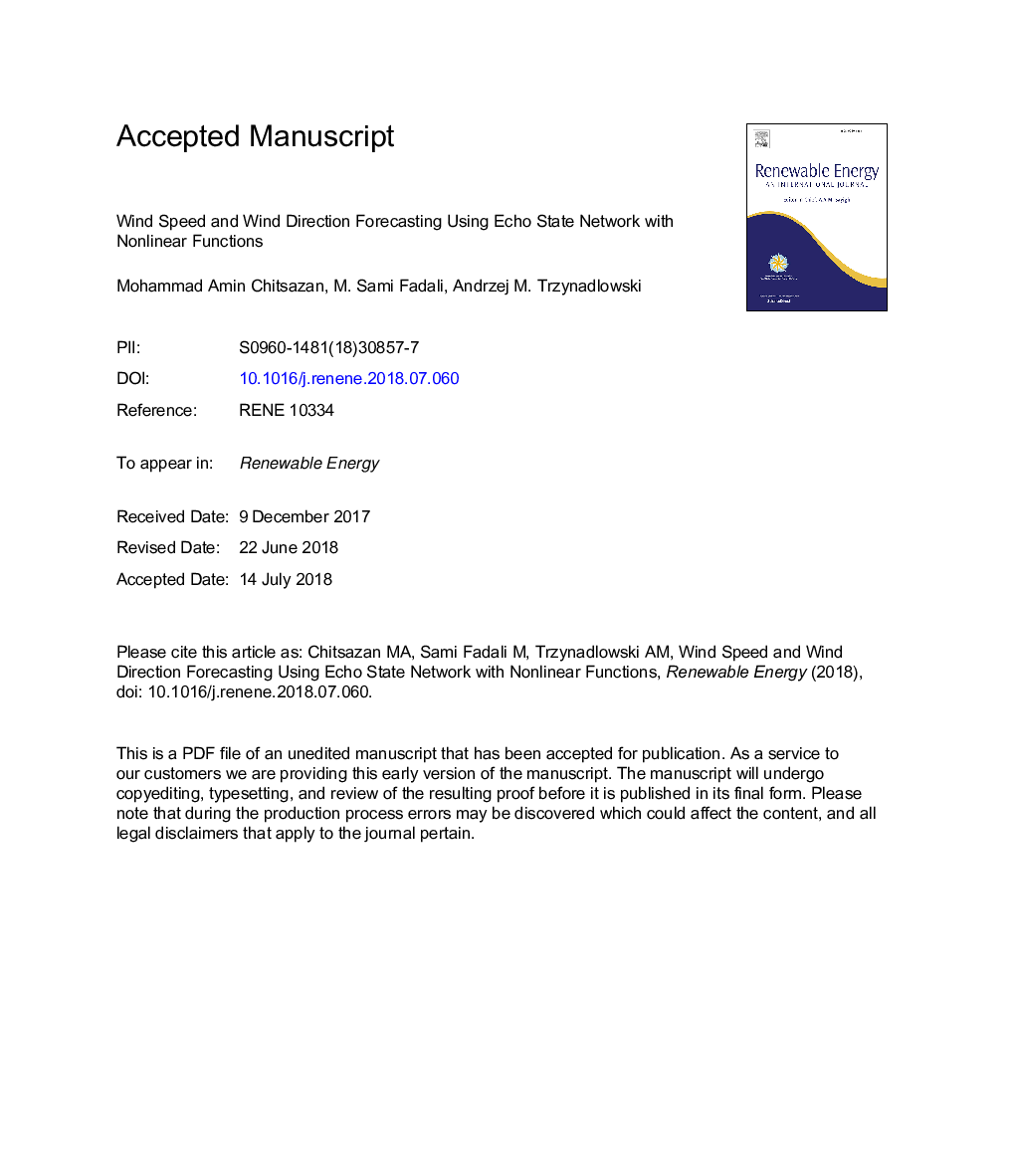| Article ID | Journal | Published Year | Pages | File Type |
|---|---|---|---|---|
| 6763698 | Renewable Energy | 2019 | 28 Pages |
Abstract
Wind turbines are among the most popular sources of renewable energy. The energy available from wind varies widely because wind energy is highly dependent on continually fluctuating weather related parameters such as wind speed and wind direction. Wind farms have difficulties with system scheduling and energy dispatching because the availability of wind power is not known in advance. Therefore, the growth of wind power penetration in the emerging power system has made a precise wind forecasting method indispensable for system operators to include wind power generation in unit commitment and economic scheduling. This paper proposes two methods for wind speed and direction forecasting based on the nonlinear relations between the internal states of echo state networks. The methods decrease the number of internal states, and reduce the computational load compared to classical ESNs with fixed sizes and topologies by reducing the orders of the weight matrices. The design is simple with high learning capability and prediction accuracy, and does not require extensive training, parameter tuning, or complex optimization. The methods are tested with wind speed and direction data provided by the Nevada department of transportation (NDOT) roadway weather stations in the Reno, NV area. To demonstrate the efficiency of the proposed methods, they are compared with classical echo state networks (ESN) and with adaptive neuro-fuzzy inference system (ANFIS). The results of the new methods compare favorably with both ESN and ANFIS.
Related Topics
Physical Sciences and Engineering
Energy
Renewable Energy, Sustainability and the Environment
Authors
Mohammad Amin Chitsazan, M. Sami Fadali, Andrzej M. Trzynadlowski,
